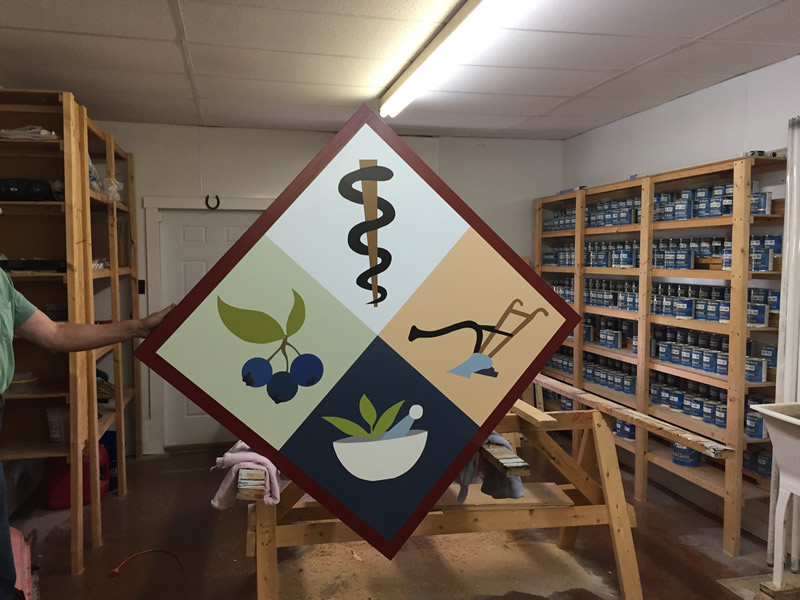Whitehouse
Block Number: 222QUILT BLOCK #222 ENTITLED “WHITEHOUSE”
David and Kerrie Hillman are the hosts of Block #222 on the McDowell Quilt Trail named “Whitehouse” after a farm that has been in their family since the 1840’s. The farmhouse was originally built by a doctor in 1816 whose office was upstairs and the family’s living quarters were downstairs.
The doctor and his wife settled in what is now the northwest corner of Rutherford County, N.C. and they painted the two-story home on the hill a bright white so as to stand out in the area, then populated by simple log homes. It became known as the “white house” and the village around it became White House Village, today called Whitehouse Community.
The doctor served the local community as well as utilizing the over 300 acres as a working farm. In the 1830’s the house was remodeled and later the upstairs was used to sell medicinal plants and remedies and typical store goods. In 1871 the owners built a large general store in front of the house which was operated until around 1950 when a newer concrete block store across from it was built. The old store was demolished in 1968.
The farm came in to David’s family through his great, great, great grandparents and the family has gradually restored the Whitehouse Farm, currently operating the acreage for the first time since the 1920’s. Farming has always been a way of life in this rural community and the Hillmans are continuing the tradition on what is now called the Whitehouse Beef & Berry Farm.
They raise American-Style Kobe beef, also known as Wagyu beef, which are pasture grazed in fields that have never had weed killers applied to them. The weeds are controlled by sustainable grazing practices and mowing before weeds can germinate. The cows are a mixture of Gelbvieh and Angus breeds and when crossbred to the Wagyu bull, produce calves of the finest pasture grown beef available.
The farm also raises organically grown blueberries, using bat guano for fertilizer and a drip irrigation system minimizing water waste. The berries, known as one of the most nutrient-dense food in the world, are picked by hand and either immediately frozen within the hour or delivered to market the next day.
In addition several honeybee colonies produce a mix of poplar, clover and wildflower honey in the spring and sourwood honey in the fall. A chemical free environment is provided for the bees to forage and all honey is raw and unfiltered.

